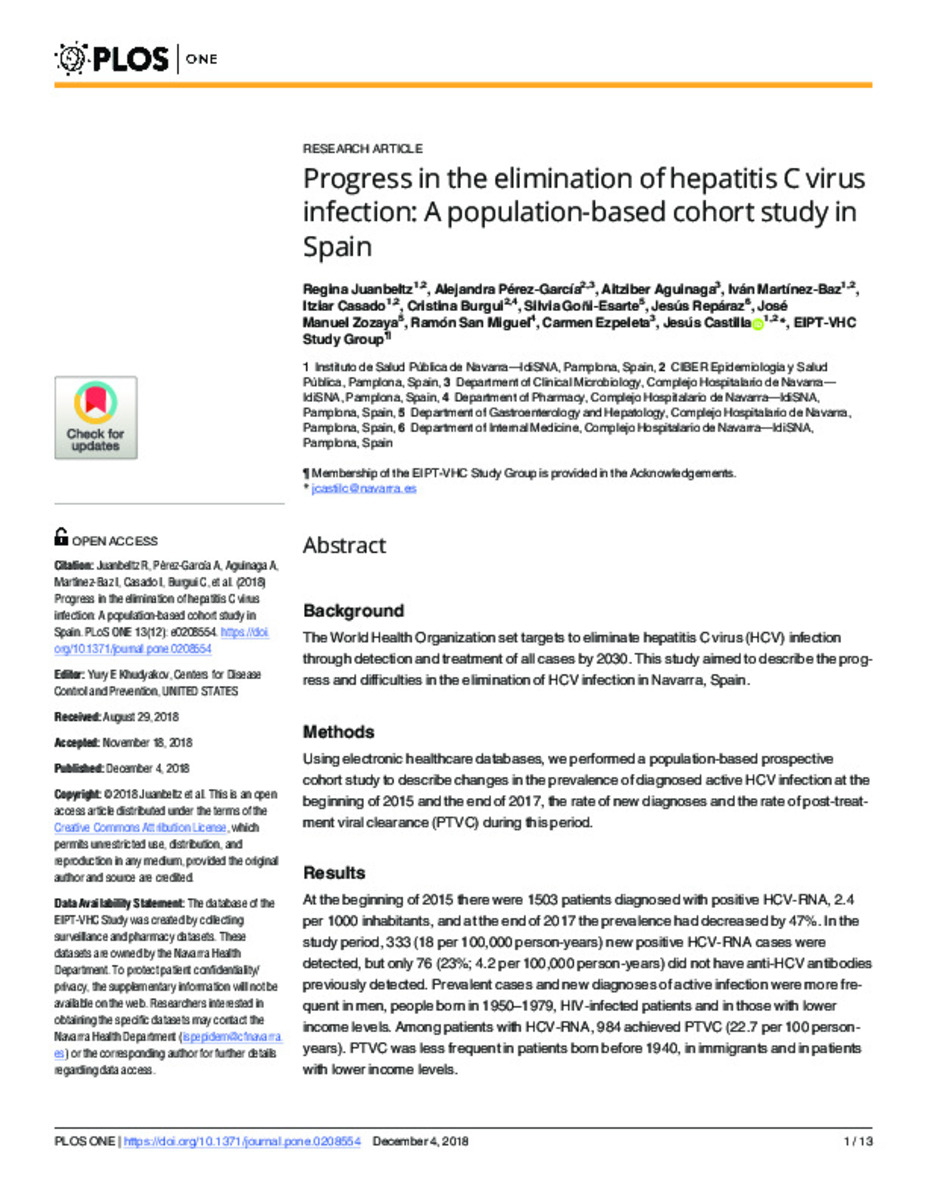Progress in the elimination of hepatitis C virus infection in Spain: a population-based cohort study
Palabras clave :
Hepatitis C virus (HCV)
Post-treatment viral clearance (PTVC)
Fecha de publicación :
2018
Editorial :
Public Library of Science
Nota:
This is an open
access article distributed under the terms of the
Creative Commons Attribution License, which
permits unrestricted use, distribution, and
reproduction in any medium, provided the original
author and source are credited.
Cita:
Juanbeltz, R. (Regina); Pérez-García, A. (Alejandra); Aguinaga, A. (Aitziber); et al. "Progress in the elimination of hepatitis C virus infection in Spain: a population-based cohort study". Plos medicine. 13 (12), 2018, 1 - 13
Aparece en las colecciones:
Estadísticas e impacto
0 citas en

0 citas en

Los ítems de Dadun están protegidos por copyright, con todos los derechos reservados, a menos que se indique lo contrario.







